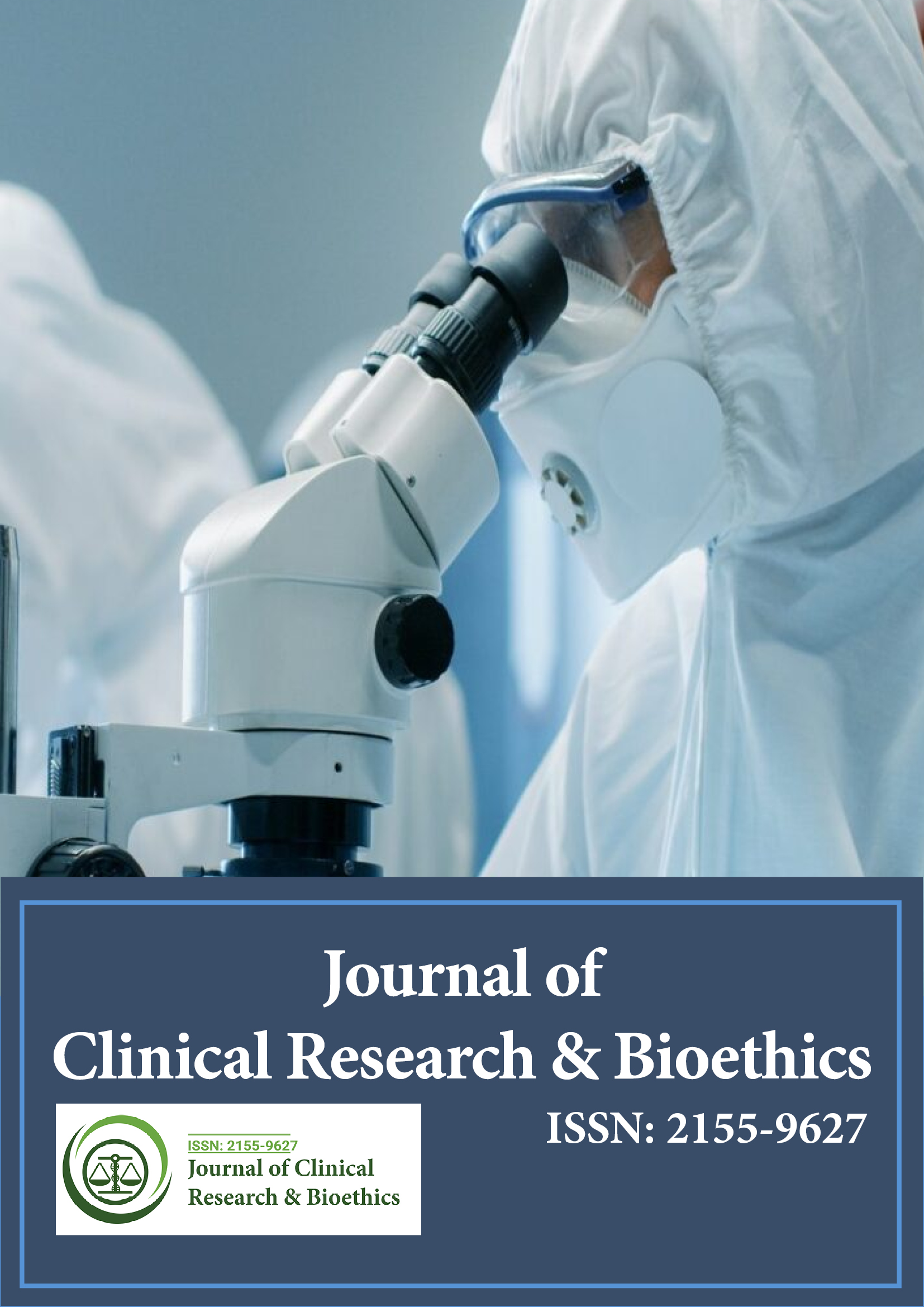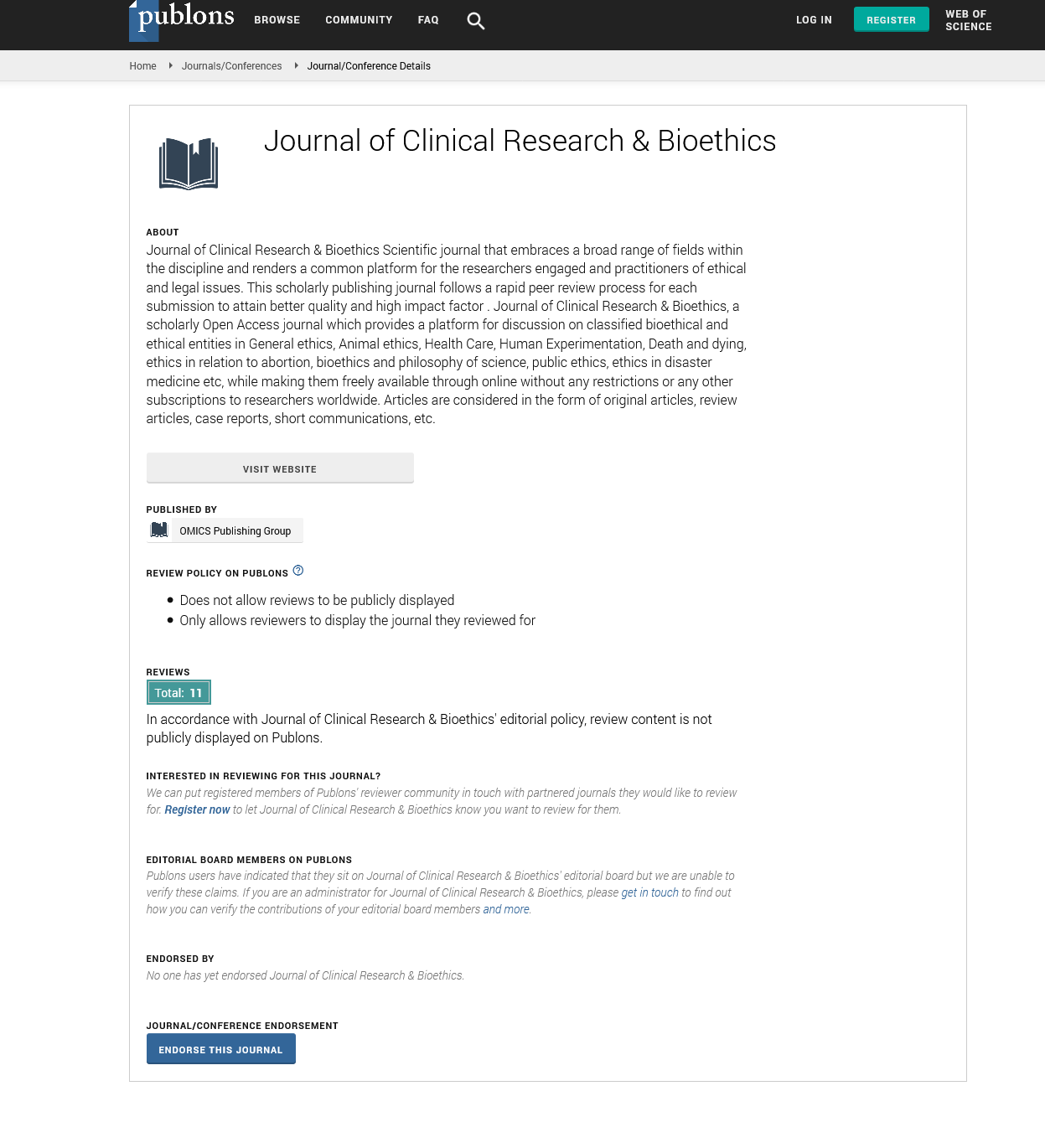PMC/PubMed Indexed Articles
Indexed In
- Open J Gate
- Genamics JournalSeek
- JournalTOCs
- RefSeek
- Hamdard University
- EBSCO A-Z
- OCLC- WorldCat
- Publons
- Geneva Foundation for Medical Education and Research
- Google Scholar
Useful Links
Share This Page
Journal Flyer

Open Access Journals
- Agri and Aquaculture
- Biochemistry
- Bioinformatics & Systems Biology
- Business & Management
- Chemistry
- Clinical Sciences
- Engineering
- Food & Nutrition
- General Science
- Genetics & Molecular Biology
- Immunology & Microbiology
- Medical Sciences
- Neuroscience & Psychology
- Nursing & Health Care
- Pharmaceutical Sciences
Perspective - (2023) Volume 14, Issue 4
Clinical Vascular Medicine Strategies for Treatment and its Future Research
Grace Eichenfield*Received: 29-Jun-2023, Manuscript No. JCRB-23-22668; Editor assigned: 03-Jul-2023, Pre QC No. JCRB-23-22668 (PQ); Reviewed: 17-Jul-2023, QC No. JCRB-23-22668; Revised: 24-Jul-2023, Manuscript No. JCRB-23-22668 (R); Published: 02-Aug-2023, DOI: 10.35248/2155-9627.23.14.467
Description
The vascular system plays a vital role as the life-sustaining network responsible for transporting oxygen, nutrients, hormones, and immune cells to every corner of the body. Clinical vascular medicine, a specialized field within the broader domain of cardiovascular medicine, is dedicated to understanding, diagnosing, and treating disorders that affect this complex circulatory system. From the smallest capillaries to the largest arteries, clinical vascular medicine delves into the intricacies of blood vessel health and its implications for overall well-being.
Vascular system
The vascular system comprises a vast network of blood vessels, including arteries, veins, and capillaries, working synergistically to ensure the efficient transport of blood throughout the body. Arteries carry oxygen-rich blood away from the heart to nourish organs and tissues, while veins return oxygen-depleted blood to the heart and lungs for replenishment. Capillaries, the tiniest vessels, facilitate the exchange of nutrients and waste products between the blood and surrounding tissues. Maintaining the health and proper functioning of these vessels is paramount to overall health.
Diseases and disorders of the vascular system
Clinical vascular medicine deals with a spectrum of vascular disorders, ranging from common conditions like varicose veins to more serious conditions like Deep Vein Thrombosis (DVT), atherosclerosis, aneurysms, and Peripheral Artery Disease (PAD). Atherosclerosis, characterized by the buildup of fatty deposits within arterial walls, can lead to narrowed or blocked arteries, raising the risk of heart attacks and strokes. Aneurysms occur when weakened arterial walls bulge, potentially rupturing and causing life-threatening internal bleeding. PAD, often associated with atherosclerosis, restricts blood flow to the extremities, causing pain, impaired wound healing, and even tissue damage.
Diagnosis and assessment
The field of clinical vascular medicine employs various diagnostic tools to evaluate vascular health. Non-invasive imaging techniques like ultrasound, Computed Tomography (CT) angiography, and Magnetic Resonance Angiography (MRA) allow clinicians to visualize blood vessels, assess blood flow, and identify abnormalities. These technologies aid in diagnosing conditions such as blood clots, arterial blockages, aneurysms, and more. Additionally, clinicians may utilize functional tests like Ankle-Brachial Index (ABI) measurements to evaluate blood flow to the legs and assess the severity of PAD.
Treatment approaches
The treatment landscape in clinical vascular medicine is diverse and tailored to the specific needs of each patient. Lifestyle modifications, including smoking cessation, regular exercise, and dietary changes, are often the initial approach to managing vascular conditions. For certain cases, medications may be prescribed to control risk factors like high blood pressure, high cholesterol, and blood clot formation. Invasive procedures such as angioplasty and stent placement can be used to open blocked arteries and restore blood flow.
Surgical interventions play a major role in managing complex vascular conditions. Aortic aneurysms may require surgical repair or endovascular stent grafts to prevent rupture. Thrombectomy procedures can remove blood clots from blocked vessels, reducing the risk of organ damage. In severe cases of PAD, bypass surgery might be considered to reroute blood flow around blocked arteries, enhancing circulation to the affected limb.
Emerging technologies and research
Advancements in clinical vascular medicine are driven by ongoing research and innovative technologies. Endovascular techniques, where procedures are performed within blood vessels using catheters and minimally invasive tools, have revolutionized treatment approaches. Additionally, stem cell therapy and tissue engineering indicate possibilities for regenerating damaged blood vessels and improving circulation in patients with critical limb ischemia.
Comprehensive patient care
Clinical vascular medicine extends beyond the physical aspects of treatment. Effective patient care encompasses education, counseling, and support to help individuals understand their condition, make informed decisions, and adopt healthier lifestyles. Patient engagement is crucial in preventing the progression of vascular diseases and reducing the risk of complications.
Future of clinical vascular medicine
As medical knowledge advances and technology evolves, clinical vascular medicine continues to evolve as well. Personalized medicine approaches, where treatments are customized to an individual's genetic identity and specific risk factors, are becoming more prevalent. Additionally, a deeper understanding of the intricate mechanisms governing blood vessel health could lead to novel therapeutic targets and interventions.
Conclusion
Clinical vascular medicine plays a pivotal role in safeguarding the health of the circulatory system. From early detection and diagnosis to innovative treatments and ongoing patient care, this specialized field is essential for maintaining optimal vascular health and improving overall quality of life. As research progresses and medical techniques advance, in future provides significant prospects for continued advancements in the field of clinical vascular medicine.
Citation: Eichenfield G (2023) Clinical Vascular Medicine Strategies for Treatment and its Future Research. J Clin Res Bioeth. 14:467.
Copyright: © 2023 Eichenfield G. This is an open-access article distributed under the terms of the Creative Commons Attribution License, which permits unrestricted use, distribution, and reproduction in any medium, provided the original author and source are credited.

